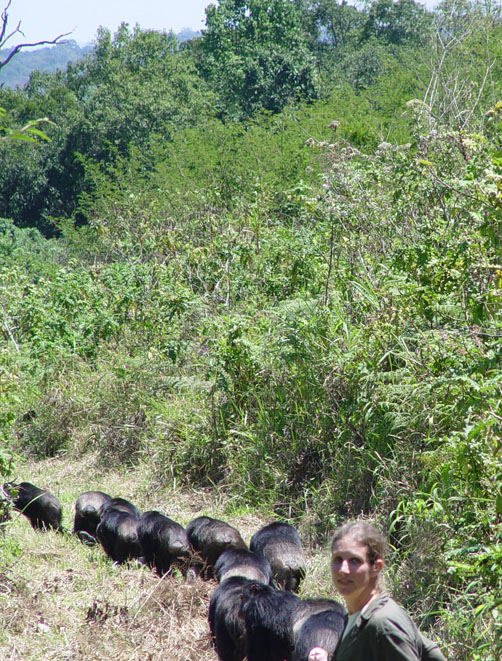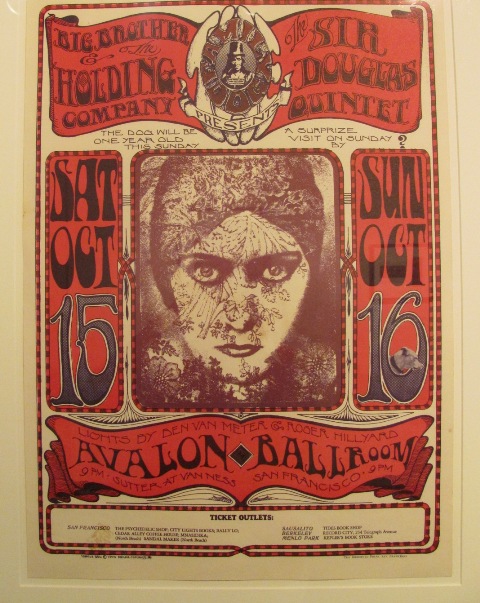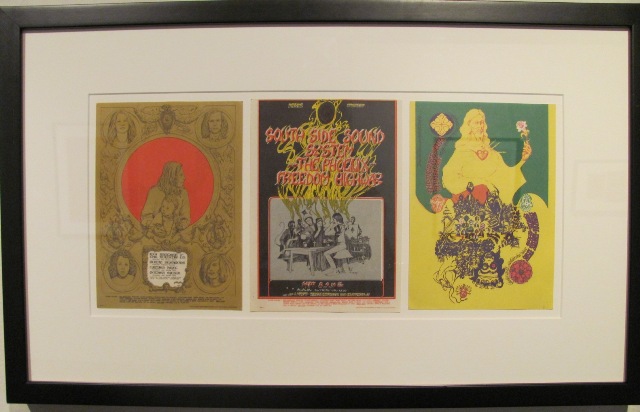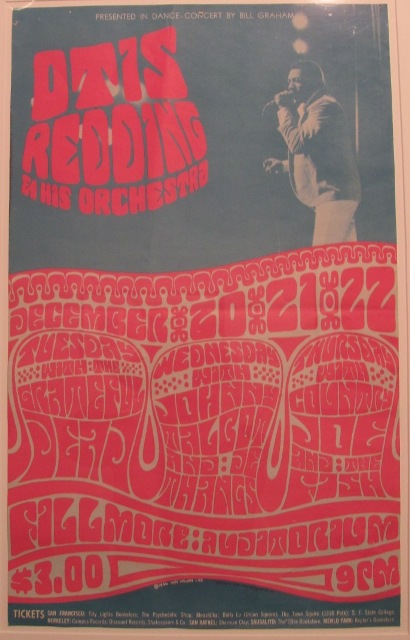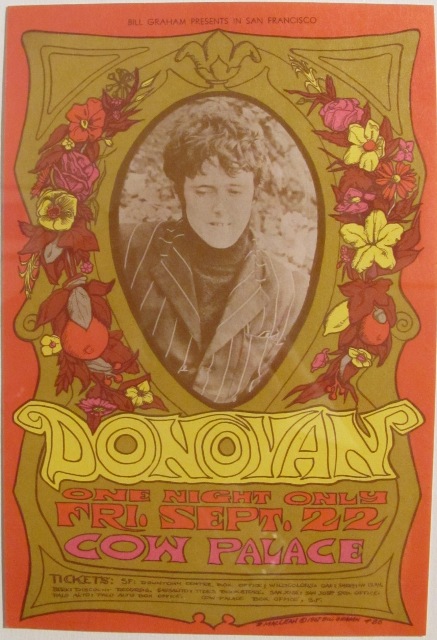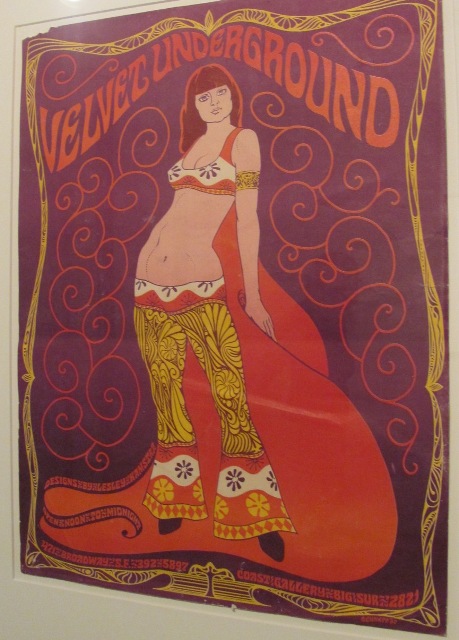Summer break is almost over and students in the UALR Children International Program will have lots of news to share with their friends.
They spent four weeks this summer in the Mind Your Own Business Summer Camp focusing on literacy and business. Mornings were spent reading books and writing reviews for their newsletter. In the afternoon they got down to business. The young entrepreneurs formed their own companies, manufactured their products, and sold their wares at the Little Rock River Market.
Victoria and Jakayla were selling hand-painted bookmarks.
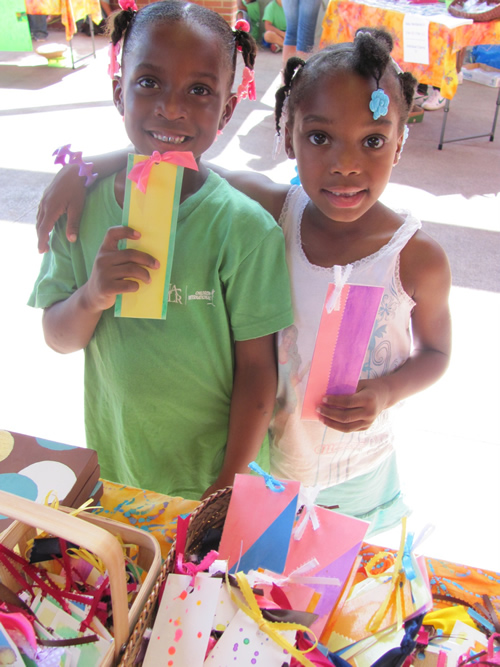
Takerean and her colleagues were eager to show their “very special” necklaces.
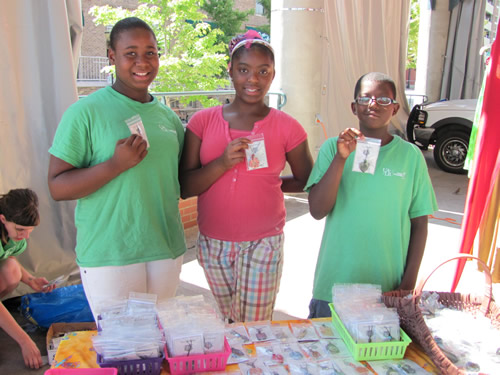
Takerean explained, “They are made by a technique called Raku. We painted them and then put them in a 1,800 degree kiln to fire them. Raku is Japanese for a very happy accident.”
Other “companies” sold wire people cards, wind chimes, crazy coasters, and eco-friendly photo frames made from newspapers.

All of the students were passionate about their “businesses” but one young man stood out from the crowd. Malik took a few moments share with me what he learned this summer. “You gotta have good leadership to have a good business. You have to learn how to pay your employees, and you have to be nice to people or they might quit their job.”
At the end of the day the summer campers tallied up their earnings – an impressive total of $1,600. They donated $200 to the Rice Depot to help feed needy children and the rest was deposited into the UALR Children International Scholarship Fund. In just a few years, some of these students will get help with their college education from the seeds they planted in summer camp.
For more information about the UALR Children International program visit ualr.edu/children.
The technician finished installing a self checkout station at Ottenheimer Library today just minutes before I arrived. I was excited about trying it the same way I get excited about checking my own groceries at Kroger. The power.
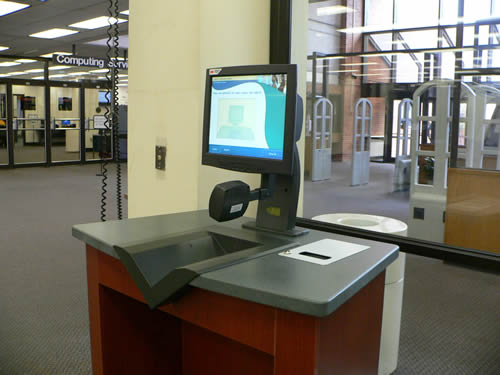
I looked around trying to find anyone with books in hand, ready to give the machine a try. Lots of folks studying, but no one quite ready to check out. So I talked Carol at the Reference Desk into demonstrating how it worked.

We got a few pointers from the technician to make sure we were doing it right. It’s fairly intuitive, much the same way the ones at grocery stores work. You can scan the barcode on your card, or manually type the number in. Here are a few more tips to keep in mind:
- If your campus ID card is older, go ahead and get a new one. My 1999 vintage card won’t cut it on the new machine.
- Self checkout is mainly for standard size books. If you’re checking out other media or large format books, you’ll need to check out the old school way.
Call it an “uh-oh” moment. A utility crew digging near Lot 4 hit an unmarked water pipe Thursday morning. As a result, a geyser erupted that made University Drive nearly impassable.


Honestly, with the heat advisory and temps approaching 100 degrees, the thought of running through it did cross my mind. According to our Facebook comments, I wasn’t the only one considering it.

When Central Arkansas Water arrived, the water had to be shut off to repair the pipe. Several buildings, including our office and the DSC, lost bathroom privileges for about four hours.



We do appreciate the hard work of the crews making the repairs in that oppressive heat.
It may be hot outside, but when my office gets super cold, I like to take a walk around campus. Two things happen: I quickly gain a healthy appreciation for the A/C, and I get the opportunity to see the progress of our building projects. Right now, the transformation happening over at Stella Boyle Smith Concert Hall is making some noise. I mean literally.
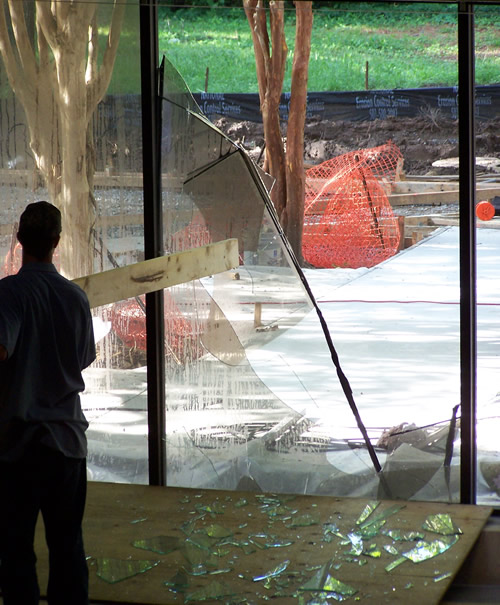
Replacing the windows on the stage required busting them out demolition-style, which, I’m told, sounded like a bus crashing through the building. Hope there was a little forewarning on that.
 Meanwhile, the garden area is shaping up nicely. It’s going to make a pleasant venue for outdoor receptions.
Meanwhile, the garden area is shaping up nicely. It’s going to make a pleasant venue for outdoor receptions.
On Friday, July 16, hundreds of new UALR students – many accompanied by parents – filed into the Donaghey Student Center for Student Orientation.
Student Orientation Day from UALR Office of Communications on Vimeo.
Activities for the day included a continental breakfast, a welcome message from various administors, followed by break-out sessions for parents and students alike. Some of major topics covered during the day-long event included navigating financial aid, selecting & declaring a major, and getting involved on campus.
Presentations were also given regarding specific areas of academic interest.

When Jasmine Sheppard was so tragically taken from the UALR community July 10, professors and students alike mourned her loss and that of her bright future.
Sheppard was a junior Mass Communications major and had been awarded the Arkansas Broadcasters Association Patricia Wilcox Scholarship, a full scholarship for the 2010/2011 school year.
Associate Professor Jeanne Rollberg says she was fortunate to teach Sheppard. “It was a great pleasure to teach Jasmine Sheppard,” she says. “She was a dedicated student, a gentle human being, and someone who definitely had a very bright future.”
Rollberg noted that Sheppard was thoughtful and respectful, engaged in her learning, and was also very conscientious — a wonderful academic citizen. “She was a good role model for other students, and seemed to have a passion for making a contribution and doing the right thing, without exception,” says Rollberg. “She also had a delightful sense of humor and knew how to have fun. Those of us who were lucky enough to work with Jasmine will miss her gentle spirituality, her intelligence, her wit, and her desire to give back and to make the world a better place. She was a beauty in every sense of that word, and her loss is tragic for all who knew her.”
Amy Barnes, Assistant Professor in the School of Mass Communications, also had taught Sheppard. “I had Jasmine for one course and was delightfully surprised with her efforts. I say surprised because for the first couple of classes she was quiet, almost retreating. But then she delivered her first assignment, and I knew immediately I had a light ready to shine.”
Watch School of Mass Communications Director Jamie Byrne remember Sheppard in this clip from KTHV:
Read this story on todaysthv.com.
Gang conflict. Border patrols. Bloodshed in the jungle.
Recently you may have read about Dr. Sylvia Amsler of the UALR Department of Anthropology, and her involvement in the study of chimpanzees living in Uganda’s Kibale National Park.
Her work, which documented “lethal coalitionary attacks” between rival chimp groups made headlines in research circles, and around the world.
Out of general curiosity, and a desire for the UALR community to get first-person perspective from Sylvia, I sent her a few questions and she didn’t hesitate to respond. Below you’ll find a Q&A, in which Dr. Amsler graciously responds to an inappropriate initial question, and goes on to describe in detail not only her career path, but also the rigors and challenges of jungle research.
Q:Purely hypothetical. Let’s pretend someone is employed, for example, as a web designer, and would like to play with monkeys instead of being tied to his desk all day. Your web profile states that at one time, you were a primate keeper at the Little Rock Zoo. How does one obtain and/or apply for that job?
“Well, first I must correct the notion that zoo keepers get to “play with monkeys” – keepers work pretty hard cleaning and maintaining exhibits, preparing food, monitoring the health and well-being of the animals, and providing behavioral enrichment to them. It’s best for the primates if they have other primates of the same species to “play with” – so that they can live as natural a social life as possible.
That said, being a keeper is extremely rewarding, and therefore is a fairly coveted job. I feel quite lucky to have had the opportunity to get a job as a keeper at the Little Rock Zoo just when I needed and wanted one – during a 4 year tenure (my husband was in medical school here) in Little Rock between undergrad and grad school.
Spending time volunteering at the zoo, or in other animal care capacities, is a good way to make contacts and gain experience. In my case, I did a keeper internship at Brookfield Zoo in Chicago as an undergraduate. I then contacted keepers when I moved to Little Rock and volunteered for several months in both the great ape and carnivore departments before a position became available for which I could apply.
The fact that I had animal care experience and had made contacts here at the zoo undoubtedly helped me get my foot in the door. Having a degree in an animal-related field didn’t hurt either. So my advice to this hypothetical web designer would be to spend his/her off-time cheerfully chopping fruit and scooping poop in the extreme heat just for fun for as long as it takes for a position to open up. With the current economy though, it would be best to keep the day job.”
Q: Thank you for the career advice. Your time in Uganda, researching the chimpanzees – what was the most challenging aspect of that work? The most rewarding? Any other comments about that experience?
“The most challenging aspect is probably the physical demands of following chimpanzees. I leave camp at about 7am, and hike out until I find chimpanzees, which can take anywhere from 5 to 90 minutes. I then stay with the chimpanzees until 6pm before heading back to camp – again, a trek of anywhere from 5 to 90 minutes.
During this ~12 hour day, I spend a great deal of time scrambling to keep up with my subjects as they travel fairly quickly up and down the hilly terrain, sometimes on trails but more often through the forest and underbrush. Unlike the chimps, I carry a heavy backpack, hold an open notebook (in which I record observations during travel), and hold up my GPS unit to record their changing location.
At the end of the day I am generally exhausted, but need to stay up late enough to transfer all GPS points and handwritten data into my computer in case I lose my notebook (it happens!) At camp we use solar panels to charge car batteries during the day, providing a limited amount of electricity for lights and computers at night.
Pretty much everything else about field work is rewarding. I love living in the middle of the forest.
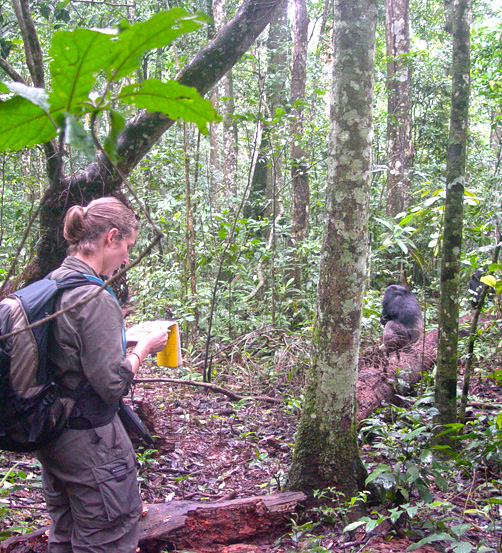
Our camp is situated on a hill overlooking a beautiful tropical rainforest. From this vantage point we are able to hear not only the calls of chimpanzees, but also multiple species of monkeys and birds, as well as occasional bellows of buffalo or elephants.
Being so close an observer of the lives of wild animals is truly an amazing experience. At Ngogo, my research site, hardly a day goes by that I don’t successfully contact chimpanzees. I follow these animals at a distance of about 5 meters and am sometimes completely surrounded by chimpanzees living their lives – feeding, grooming one another, resting, playing, and sometimes fighting.
 One of the most dramatic events that I have been privileged to witness as a chimpanzee researcher is the topic of the paper that has just come out in Current Biology this week. Chimpanzees are a territorial species, and I focused on their territorial behavior in my dissertation research.
One of the most dramatic events that I have been privileged to witness as a chimpanzee researcher is the topic of the paper that has just come out in Current Biology this week. Chimpanzees are a territorial species, and I focused on their territorial behavior in my dissertation research.
Large parties of males regularly patrol the boundaries of the community territory, sometimes leaving to make deep incursions into the territories of their neighbors. Their usual noisy, boisterous natures are quelled during these patrols, as they silently travel in a tight single-file formation. They pause regularly to listen for neighboring chimpanzees and to investigate any signs of chimpanzees that they encounter (such as feces, food trees, sleeping nests, etc.). They appear to be trying to make contact with other chimpanzees.
If the patrollers are able to find and isolate a single individual or very small party of chimpanzees from the other community, they will generally attack – with sometimes fatal consequences. Although it can be disturbing to watch chimpanzees killing other chimpanzees, it is also a fascinating behavior of our closest living relatives.
Data collected by myself and my colleagues, Dr. John Mitani from the University of Michigan and Dr. David Watts from Yale University, suggest that chimpanzees commit lethal aggression against stranger chimpanzees in order to gain territory. At Ngogo we have observed or inferred 21 instances of lethal aggression against neighbors over a 10-year period. 13 of these killings occurred in one particular area to the northeast of the Ngogo chimpanzees’ territory.
Last summer the Ngogo chimpanzees expanded their territory into the area formerly occupied by their northeastern neighbors, increasing territory size by about 20%. We have therefore provided the first direct evidence that territorial activities by chimpanzees, such as boundary patrols and lethal aggression, are adaptive because they can result in an increase in the feeding area available to all community members.”
(Dr. Sylvia Amsler is a lecturer in the UALR Department of Anthropology. To learn more about the program, visit ualr.edu/anthropology)
A few months ago, I started reading Dr. George Jensen’s new book Some of the Words are Theirs. I was intrigued by the premise of it, a sort of re-imagining of an absent, alcoholic father. The book is much more than this, relating stories extending from childhood to the present about his entire family’s response to a man he barely knew.
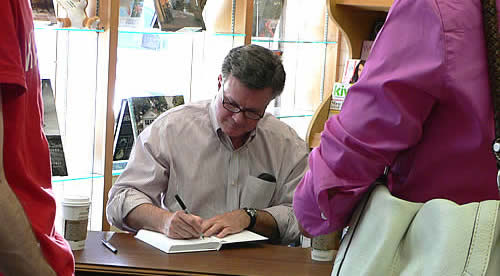
Upon his mother’s death, George came across old letters and photographs that along with his scholarly research about alcoholic narratives, prompted him to unfold a difficult truth the family had stored, a history still revolving around the father figure, George Sr. He actively sought out people who knew George Sr. before and after his paternal role began. He contacted Navy shipmates, co-workers, and others who had some affiliation with George Sr. just before he died.
But we learn a lot more in this exploration than a composite of George Sr. In fact, as much as George discovers who this man was, apart from shared biology, the character of George Jr. increasingly fleshes out.
Admittedly, it took me awhile to get through it, not because my father is an alcoholic (he’s not), nor was he absent during my youth. Still, I could easily relate to George’s story because the person that I know my father to be is in many ways a completely different person the rest of the world sees. As a pastor of a church, he is loved by many. But our relationship has always been complicated, and I have often reacted bitterly to the disconnect.

As George began to re-imagine his father from the perspective of colleagues, themselves strangers, to see him as a separate individual from their eyes, “outside the role of husband or father or alcoholic,” I tried to re-imagine mine, detaching the simplified labels. And as George says he began to care about his father, I decided to let my dad off the hook for what I deemed parental ineptitude, with a new appreciation that we all have things to forgive.
This summer, George will journey across the U.S., in Steinbeckian fashion. His blog provides us a somewhat day-by-day commentary on what he uncovers or encounters along the way:
When I was in high school, I was not an avid reader. I did, however, devour Steinbeck’s Travels with Charley. The book is about Steinbeck’s trip around the contiguous 48 states with Charley, his well behaved (maybe, more like old and tired) poodle. Steinbeck felt that he had lost touch with America. So, he packed up a camper, some provisions, and his dog and started to drive.
(Of course, many American writers–Mark Twain, Walt Whitman, Stephen Crane, Jack Kerouac–headed west, usually at the beginning of their careers. These are journeys about Americans trying to touch the frontier before it’s gone, but spiritual journeys as well. The authors head out in search of some elusive thing and they end up finding themselves. We have to leave home, it seems, to find what we should have found in our backyard.)
If you favor 140 characters or less, you can also follow along on Twitter. (For the uninitiated, it’s the brevity that counts.)
Have you read George’s book? I’d love to hear your thoughts.
Amidst major renovation projects in Stella Boyle are visuals of the sex, drugs, and rock ‘n roll era. With parents 20 years older, the ’80s are to me what the ’60s are to them. Klansee Tozer and I stepped back into the ’60s on a lunch break to see the era’s psychedelic posters and cards promoting appearances by The Grateful Dead, Fleetwood Mac, Credence Clearwater Revival, Otis Redding and the like.
At “A Groovy Summer Show” on display in Gallery III through July 20, fat, curvy fonts touting concert information jump out at you ─ or may be hidden in flowers and other images. No graphic artist today would purposely design a piece with illegible fonts. I’m not quite sure how the 75,000 people living in the San Francisco area at the time found out when and where to find the Avalon Ballroom, Velvet Underground, and the Cow Palace.
Oh yeah, many were living on the streets together…and influenced by LSD.
See more photos on Flickr.
Photos by Klansee Tozer
Universities are a hotbed for unsung heroes. Jim Lynch, retiring this month after 30 years, is one of the many inside jewels at UALR whose work is invaluable, but lots of people on and off campus don’t understand what the heck he does or why he does it.
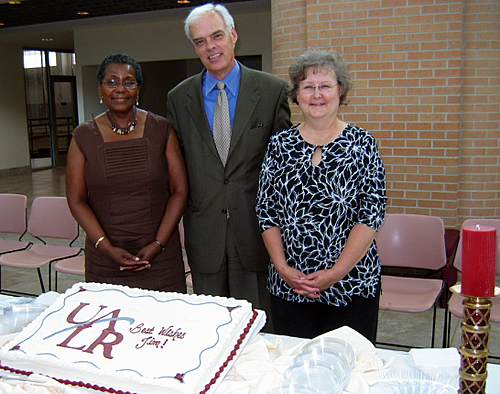
Those of us who rely on Jim as Director of Institutional Research for collecting, retrieving , reporting, and interpreting interesting and mundane data in all sorts of combinations and decimal points know the institutional treasure we’re losing.
We also know that Jim is now free to climb out of bed as late as he chooses and chase a life passion – recording Arkansas’s early black civil rights activists while they’re still around to share their stories.
We wish our friend well. Vice Chancellor Bill Walker claims he’ll miss hearing Jim’s robust radio voice that carries from one end of the second floor of Administration South to the other.
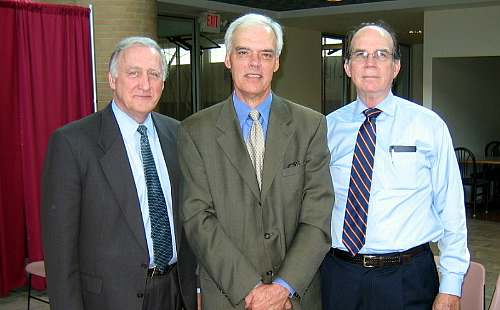
Says Bill, “Joni (Lee) and I have worked with Jim for over 20 years and have enjoyed every minute of it. He has one of the keenest minds I have ever seen, and the university is losing a great resource in Jim.”
Good luck, Lyncho. We’ll miss you!
